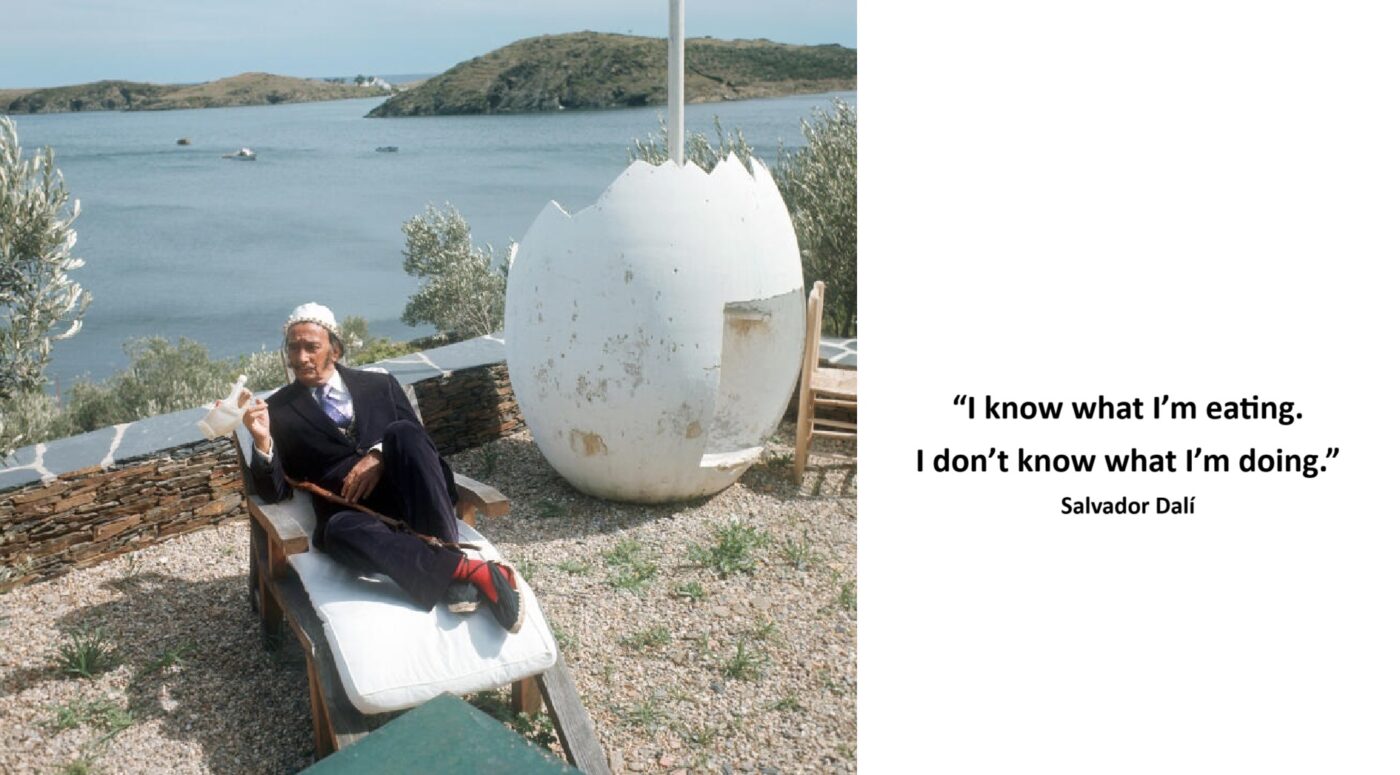The connection between art, gastronomy, and the symbolism of the egg.
“I know what I’m eating. I don’t know what I’m doing.”
Salvador Dalí
Salvador Dalí was an artist with an enigmatic personality and an extraordinarily creative mind, capable of uniquely exploring deep themes and symbols.
Among his countless sources of inspiration, one of the most surprising was food, an element that permeated his art, transforming everyday ingredients into true muses.
On the occasion of Easter, a holiday in which the egg is one of its main symbols, it’s interesting to reflect on how Dalí intertwined the gastronomic world with his art, particularly the meaning of the egg, emblematic of life and rebirth, which appears repeatedly in his works.
Salvador Dalí’s passion for food was immense, so much so that it became a true obsession that accompanied him throughout his life.
His childhood, spent in Cadaqués, was marked by feasts and popular celebrations, where the young Salvador learned to appreciate the flavours of his homeland. Stories from his childhood show how food was already a source of inspiration for him. When young Salvador won a drawing contest, his father rewarded him by taking him to the garotades of Cadaqués, large collective feasts featuring sea urchins. Dalí loved eating the pulp with a spoon or spreading it on toasted bread, a habit that became almost ritualistic for him.
He eagerly participated in local festivals and fairs, where he tasted the typical products of Catalonia, such as taps de Cadaqués and flaons de Figueres. Dalí’s relationship with gastronomy was not limited to visual inspiration alone, but extended to culinary practice as well.
In 1971, the artist published a cookbook, Les Diners de Gala, which collected the recipes loved by his wife Gala. In this book, Dalí did not simply present ordinary dishes but created a true artistic performance, proposing sumptuous and visually spectacular dinners that challenged gastronomic conventions, blending art and cooking in a provocative way.
For Dalí, food was not just earthly pleasure but a true means of creative expression. The Master of Surrealism enjoyed using food as raw material for his works. Among his favorite foods were eggs, spaghetti, bread, shellfish, ducks, cheeses, pig’s feet, snails, and chocolate.
In some of his most famous works, these foods were not just things to eat, but real metaphors. The melting clocks, for example, were born from the vision of a melted Camembert cheese. The artist stated that after a dinner, he meditated on the philosophical problems of hard and soft matter, drawing inspiration from a cheese to represent the concept of time.
One of the foods that most inspired Salvador Dalí is undoubtedly the egg, a symbol of life, creation, and renewal, themes dear to the artist, especially in relation to Easter.
The egg appears in numerous of his paintings, not only as a gastronomic element but also as a profound metaphor. A symbol of birth and creation, the egg is often depicted as an element of transformation, closely linked to the meaning of Easter with its centrality in the Resurrection.
The magnificent bronze sculpture Space Venus by Dalí, conceived in 1977, is divided into two parts, and on its base, formed by a cut, there is an egg—one of Dalí’s favorite symbols for its duality between the hard outer shell and the soft inner part, much like the snail and lobsters.
Through food, Dalí invites us to reflect on universal themes such as life, death, Resurrection, and rebirth, offering a unique lens to better understand his art and his world.
For Dalí, food was not just physical nourishment but an integral part of his aesthetic and worldview, capable of stimulating the mind and transcending the mere act of eating.
Dalí’s art and food are indissolubly linked, and the egg, a symbol of Easter, emerges as one of the most fascinating elements of this connection. His ability to transform the ordinary into the extraordinary invites us to look at food not only as sustenance but also as a source of reflection and creativity.

